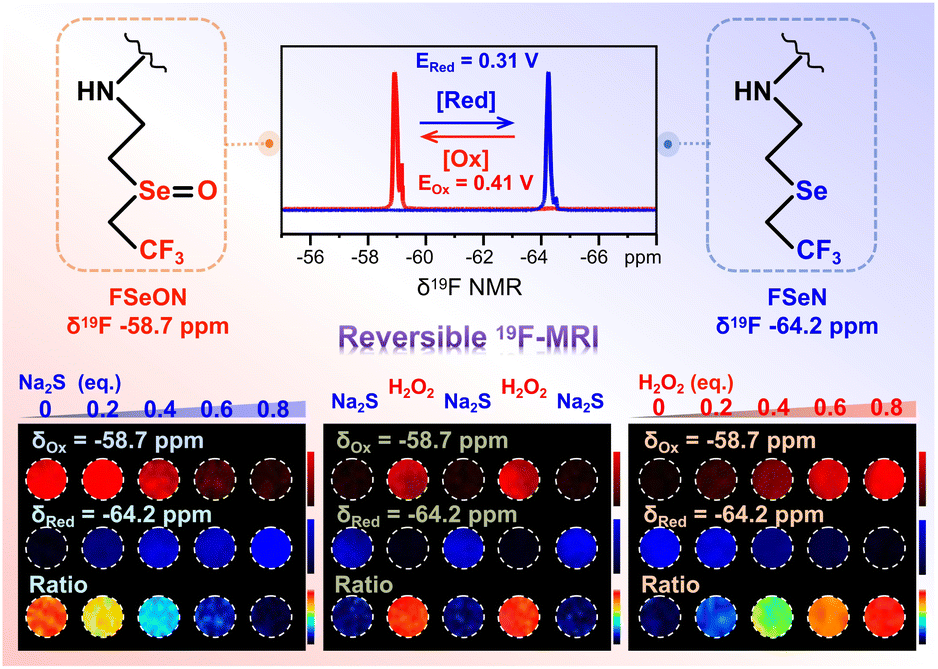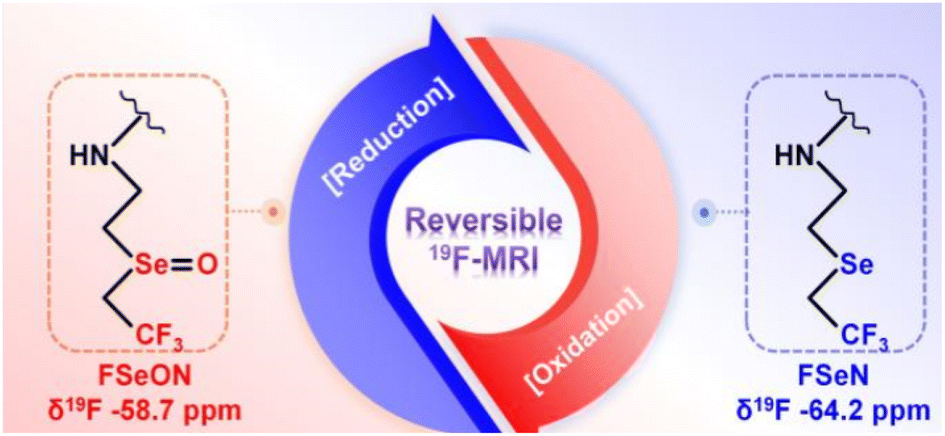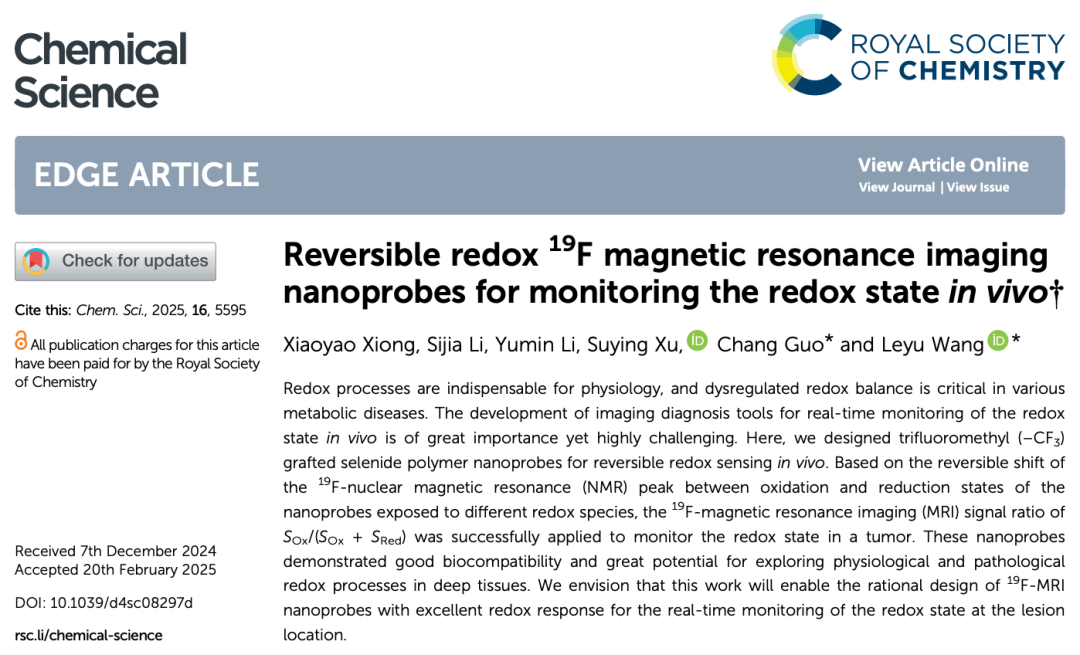Introduction
Fluorine magnetic resonance (19F MRI) imaging is a non-invasive, high penetration depth, “hot spot” type of imaging technique with promising applications in early diagnosis of diseases.
Various diseases, such as cancer, cardiovascular and neurodegenerative diseases, have been reported to be associated with redox imbalance. The development of 19F MRI probes with redox-responsive imaging capability is of great significance for the early diagnosis and progress monitoring of such diseases.
Recently, a research team led by Prof. Leyu Wang and Associate Prof. Sing Guo at Beijing University of Chemical Technology (BUCC) successfully developed a selenide polymer nanoprobe (PIBAM-FSeN) based on trifluoromethyl (-CF₃) modification, which can be used for reversible and highly sensitive monitoring of redox status in vivo.

Scheme 1. Schematic diagram of the nanoprobe for 19F-MRI monitoring of reversible redox processes.
In this work, a 19F MRI nanoprobe was developed with a selenated fluorinated small molecule, FSeN, as the core reporter group, which is capable of reflecting the redox state by means of ratiometric 19F magnetic resonance imaging. The FSeN structure in the probe will be oxidized to the FSeON structure in an oxidizing environment, and its corresponding 19F-NMR signal will be shifted from -64.2 ppm to -58.7 ppm, whereas the process and phenomenon will be reversed in a reducing environment. The redox state of the probe's environment can be clearly reflected by measuring the ratio SOx/(SOx+SRed) of the imaged signal intensities at these two positions, where SOx represents the signal intensity of the oxidizing channel and SRed represents the signal intensity of the reducing channel. In a 4T1 tumor model, the reversal of the redox state within the tumor was observed by antioxidant N-acetylcysteine (NAC) intervention, confirming the dynamic responsiveness of the probe.

This work provides a new tool for real-time monitoring of the redox state of deep tissues, which is expected to play an important role in disease diagnosis and therapeutic monitoring in the future. The results are summarized as “Reversible redox 19F magnetic resonance imaging nanoprobes for monitoring the redox state in vivo” (Reversible redox 19F magnetic resonance imaging nanoprobes for monitoring the redox state in vivo). Reversible redox 19F magnetic resonance imaging nanoprobes for monitoring the redox state in vivo" was published in Chemical Science #ChemSci, a journal of the Royal Society of Chemistry.

